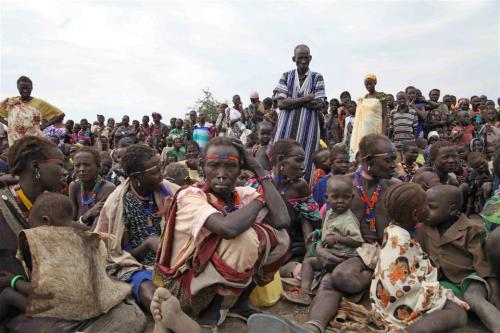South Sudan’s cereal production up but not enough for all farmers, UN reports
According to the FAO-WFP Crop and Food Security Assessment Mission to South Sudan (CFSAM) report, the country still has a “cereal gap” of 371,000 metric tons. Commercial imports will fill in part of the gap, but emergency food aid will still be needed due to high food prices and poor commercial supply.

A crowd awaits food distribution at Pibor town, South Sudan.
WFP plans to provide 224,000 tons of food and nutrition assistance to about 2.8 million vulnerable people, the agency announced.
While an important tool, the CFSAM report – carried out between October and November 2012 – focuses on cereal production and not the overall state of food security in the country.Â
“The CFSAM is our best estimate, but it’s imprecise,” said Dr. Sue Lautze, FAO’s Head of Office in South Sudan. She added that a comprehensive agricultural census is needed covering fish, livestock and crops.Â
Insecurity remains a major challenge to South Sudan’s agricultural potential. Incidents of armed cattle rustling, conflicts between and among communities, and the activities of militia groups continue to inhibit farmers in affected areas, the agencies said.
There are increasingly violent incidents related to cattle raids in eastern state of Jonglei, as well as in Unity, Lakes and Warrap states.
Decades of conflict and displacement have taken their toll on farmers’ access to quality seeds and other planting materials, and eroded their knowledge of seed production techniques, which undermine crop productivity, noted FAO.
Earlier this year, the agency launched a $612,000 programme, to be implemented with the support of the agriculture ministries of France and South Sudan, to increase the availability and quality of seeds to South Sudan’s most vulnerable farmers.
Source: UN News
- 368 reads
Human Rights
Fostering a More Humane World: The 28th Eurasian Economic Summi

Conscience, Hope, and Action: Keys to Global Peace and Sustainability

Ringing FOWPAL’s Peace Bell for the World:Nobel Peace Prize Laureates’ Visions and Actions

Protecting the World’s Cultural Diversity for a Sustainable Future

Puppet Show I International Friendship Day 2020

